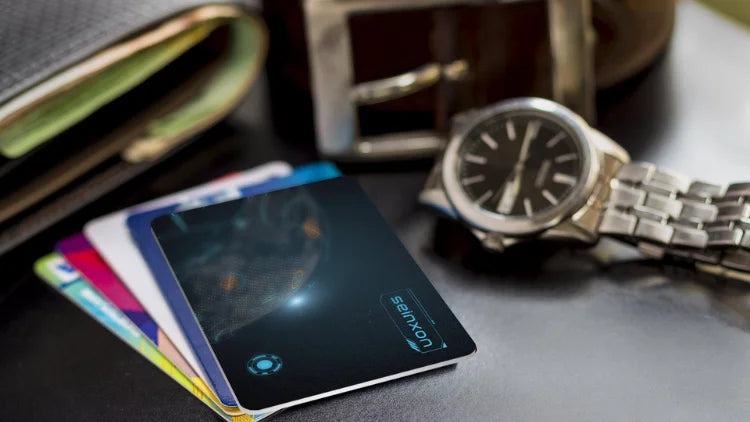Losing your wallet can be a frantic and stressful experience. But fear not, as there are practical steps you can take to increase your chances of finding your lost wallet. Here are 3 actionable tips to help you navigate through the process and hopefully recover your missing wallet sooner rather than later.
What To Do When You Lose Your Wallet
Losing your wallet can be a stressful experience, but it's essential to act swiftly and strategically to minimize any potential damages or risks. Here are some practical steps to take when you find yourself in the unfortunate situation of losing your wallet:

1. Check your Favorite Places
Upon realizing your wallet is missing, the first reaction may be to check your favorite, frequently visited places.
Think back to the places you have visited since you last remembered having your wallet. Recall in your mind the last time you used or saw your wallet. This can jog your memory and help you narrow your search to specific locations.
Once you've retraced your steps, it's time to do a physical search of your favorite places. Look under furniture, in the pockets of recently worn clothes, and even between cushions. Sometimes purses slip into unexpected places.
2. List the Contents of Your Wallet
- ID Cards: Driver’s license, national identity card.
- Bank Cards: Credit cards, debit cards.
- Insurance Cards: Health insurance, auto insurance.
- Membership Cards: Gym, club, library cards.
3. Contact Financial Institutions
- Inform the banks of your lost wallet and any bank cards.
- Report the lost credit cards to the issuers.
- Contact credit bureaus to freeze your credit report to prevent identity theft.
4. Secure Online Presence
Change Passwords: Update the passwords for important online accounts.
Enable 2FA: Set up two-factor authentication for added security on your accounts.
5. Update Auto-Pay Information
Ensure your auto-pay accounts have the updated banking information to prevent disruptions in payments.
6. Monitor Your Accounts
Keep an eye on your bank and credit card statements to spot any unauthorized transactions early.
If theft is suspected, report the incident to the local police for official documentation.
7. Using a Wallet Tracker
With the loss of a wallet comes the loss of money, and do you find it a headache just to go through the first two basic steps of finding your wallet? If you have a wallet tracker or wallet finder, these problems can be made easy.
With Seinxon Wallet Finder, which is similar to Apple Airtag, you can find your wallet within and outside the Bluetooth range.
Within Bluetooth range, Seinxon Finder connects to your Apple device. If you misplace an item in your neighborhood, you can trigger the finder to make a sound or light to find the item faster.
How Does a Wallet Tracker Work?
A wallet tracker is a small device, such as the Seinxon or Airtag, that easily fits inside or attaches to the outside of your wallet and utilizes Bluetooth technology to help you easily locate a lost or misplaced wallet.
When the Seinxon Wallet Finder is out of Bluetooth range, it utilizes Apple's Find My network to locate devices. This network utilizes millions of Apple devices around the world as a "locator beacon network." If your Seinxon Finder is near any Apple device, it updates its location on your Find My app, effectively enabling global tracking without the need for the Finder's own GPS module.
In addition to this Seinxon Wallet Finder also features RFID blocking wallets. It protects sensitive information from unauthorized scanning or theft by turning credit cards into RFID-blocking wallets.
Unlike most trackers on the market, the Seinxon Wallet Tracker also features a non-removable rechargeable battery. Utilize the charging clip for contact charging and USB-C for direct charging of the product. Works for up to 6 months on a full charge.
The detailed workings of the tracker are explained using the Airtag workings and GPS workings.
 FAQ
FAQ
What are the Chances of Finding a Lost Wallet?
If your wallet is lost rather than stolen, there's a good chance it could be returned. According to a 2019 study published in Science, over half of the people who found wallets with cash inside made efforts to return them to their owners.
What is the Bluetooth detection range of the Seinxon wallet finder?
The Seinxon wallet finder, utilizing Bluetooth technology, boasts a maximum detection range of 165 feet (50 meters) in clear, unobstructed spaces. However, barriers like walls and doors can significantly reduce this range.
Where Do People Usually Lose Their Wallets?
Common places to misplace your wallet include cars, jackets, restaurants, and offices. It's often worth retracing your steps in these areas first to see if you've simply left it behind. If you're certain the wallet is lost, prioritize securing your financial accounts and monitor for any potential signs of identity theft.
Conclusion
In conclusion, losing your wallet can be a stressful event. But with the right tips and strategies, you can increase your chances of getting your wallet back. Remember to retrace your steps, check the lost and found, cancel and replace your bank cards, and monitor any suspicious activity on your accounts. Stay vigilant and proactive to protect your hard-earned money.
To prevent this kind of mishap from happening again, it is recommended that you use a wallet tracker, which can also be placed on your luggage to track the location of your baggage while you are away from home.
Join Us and Get Exclusive Fan Benefits!

